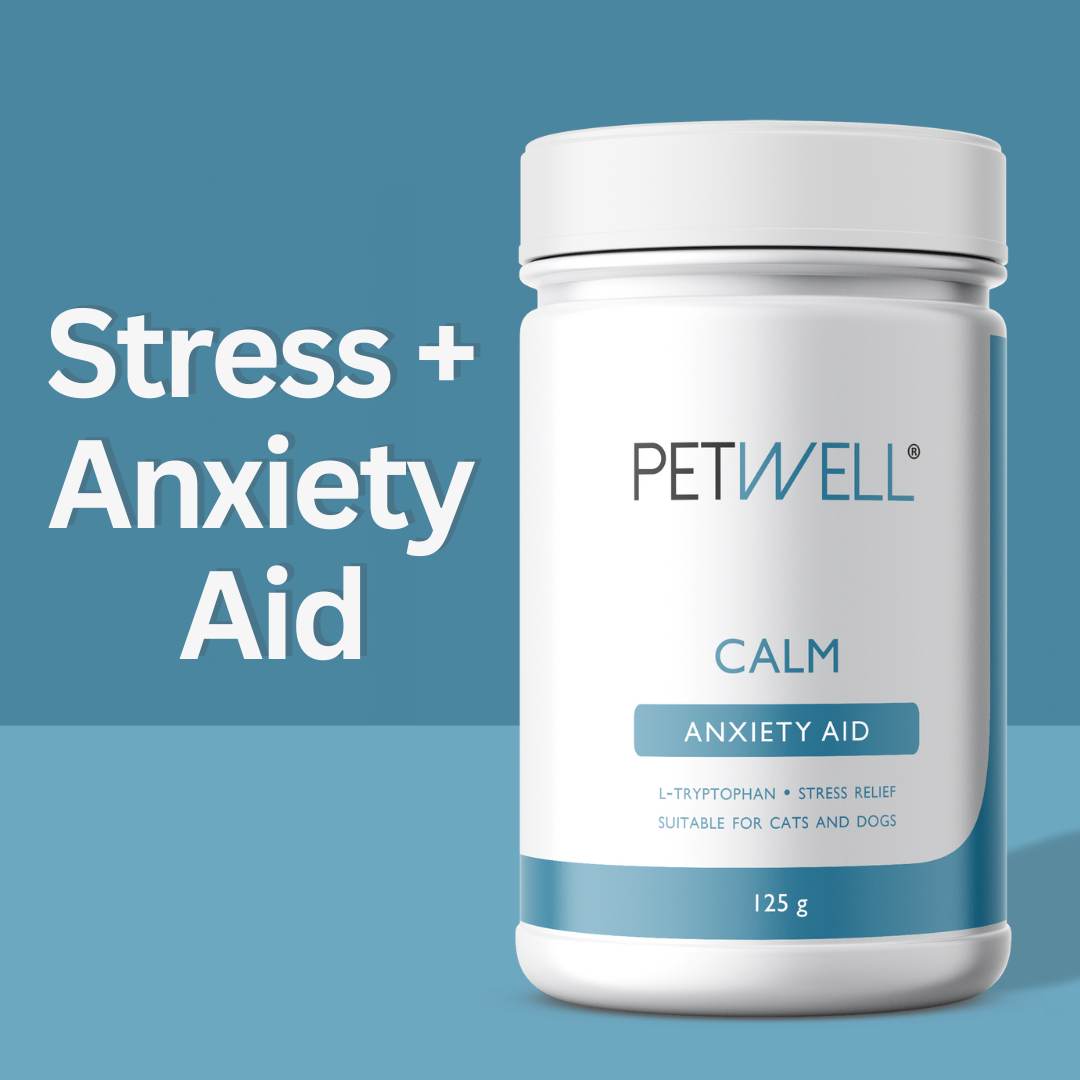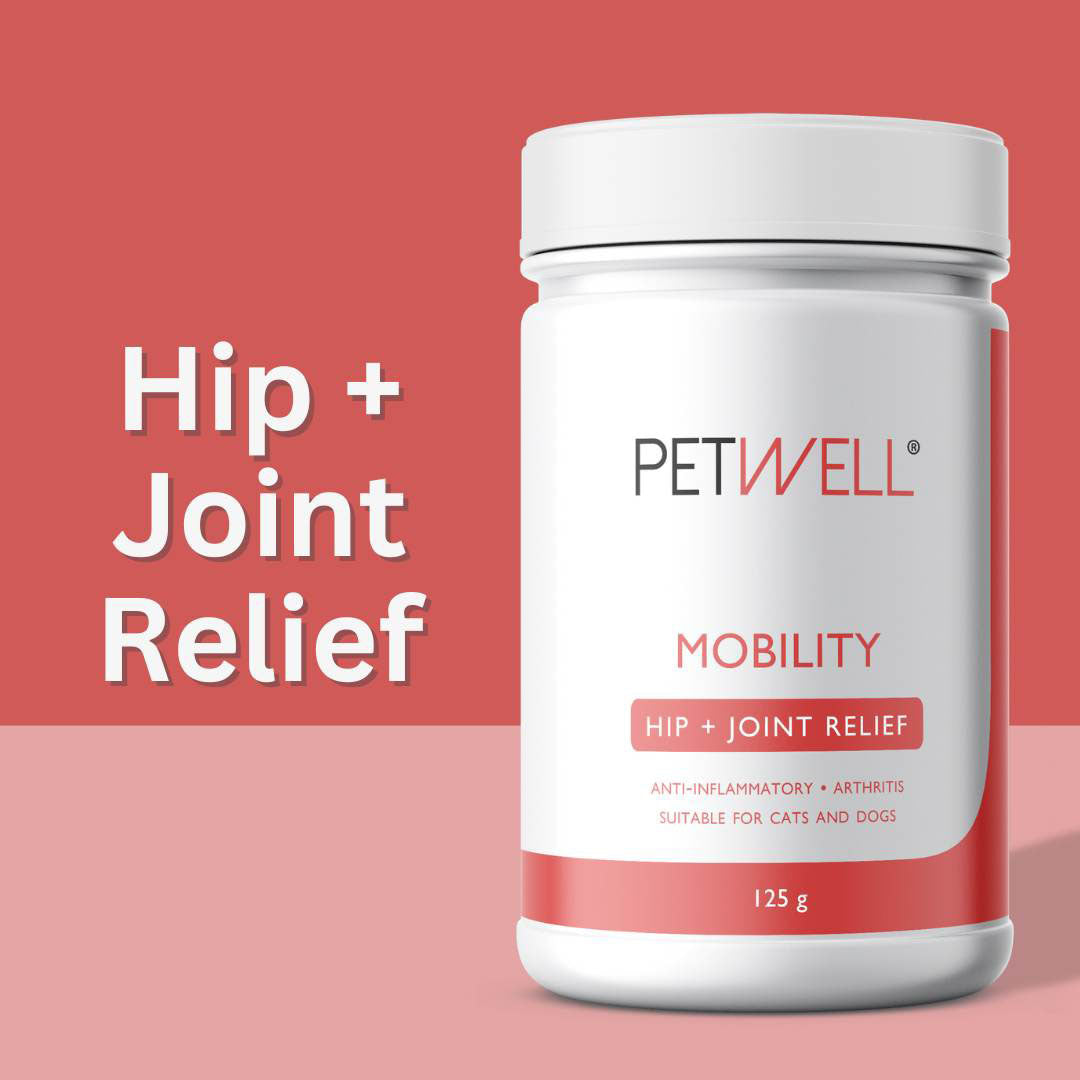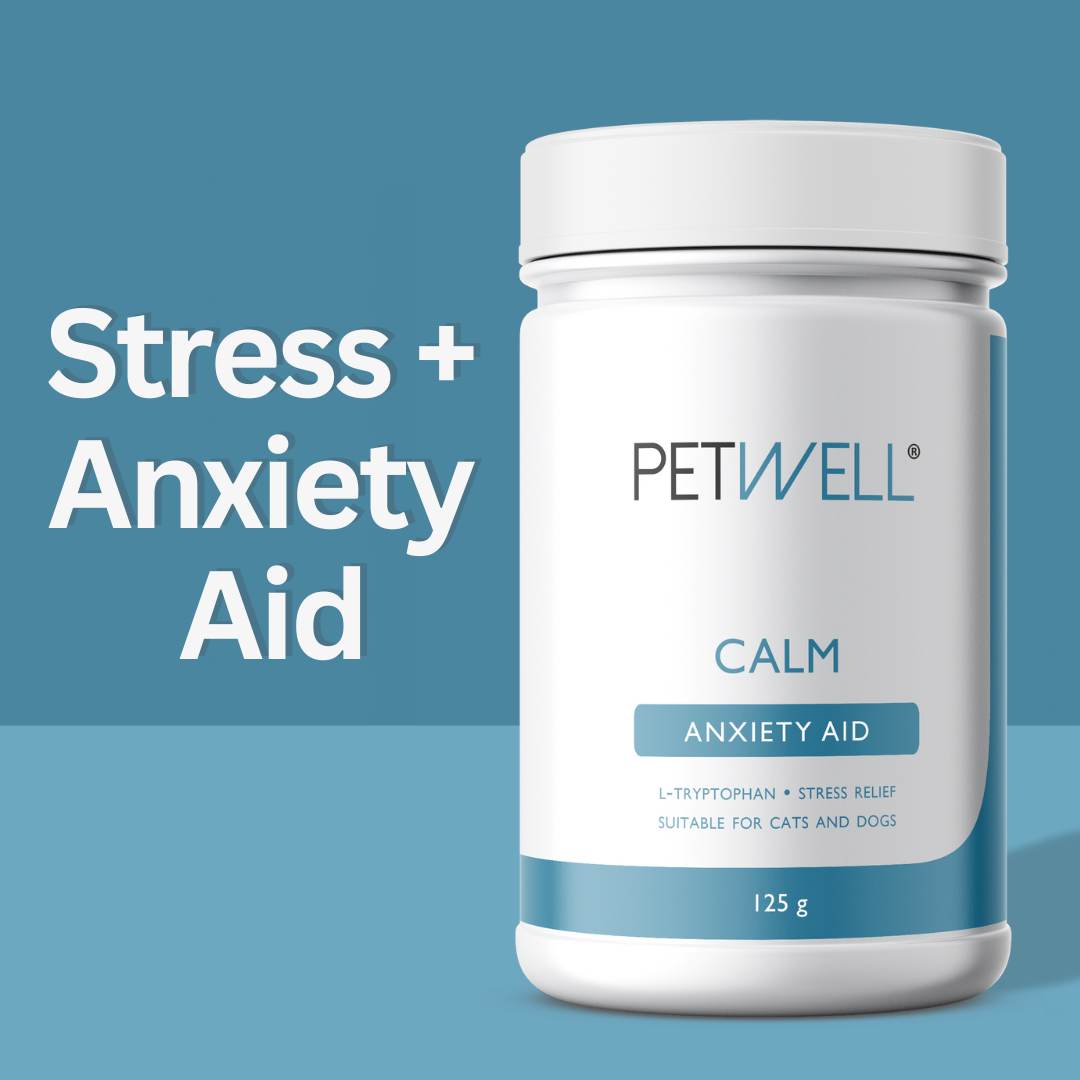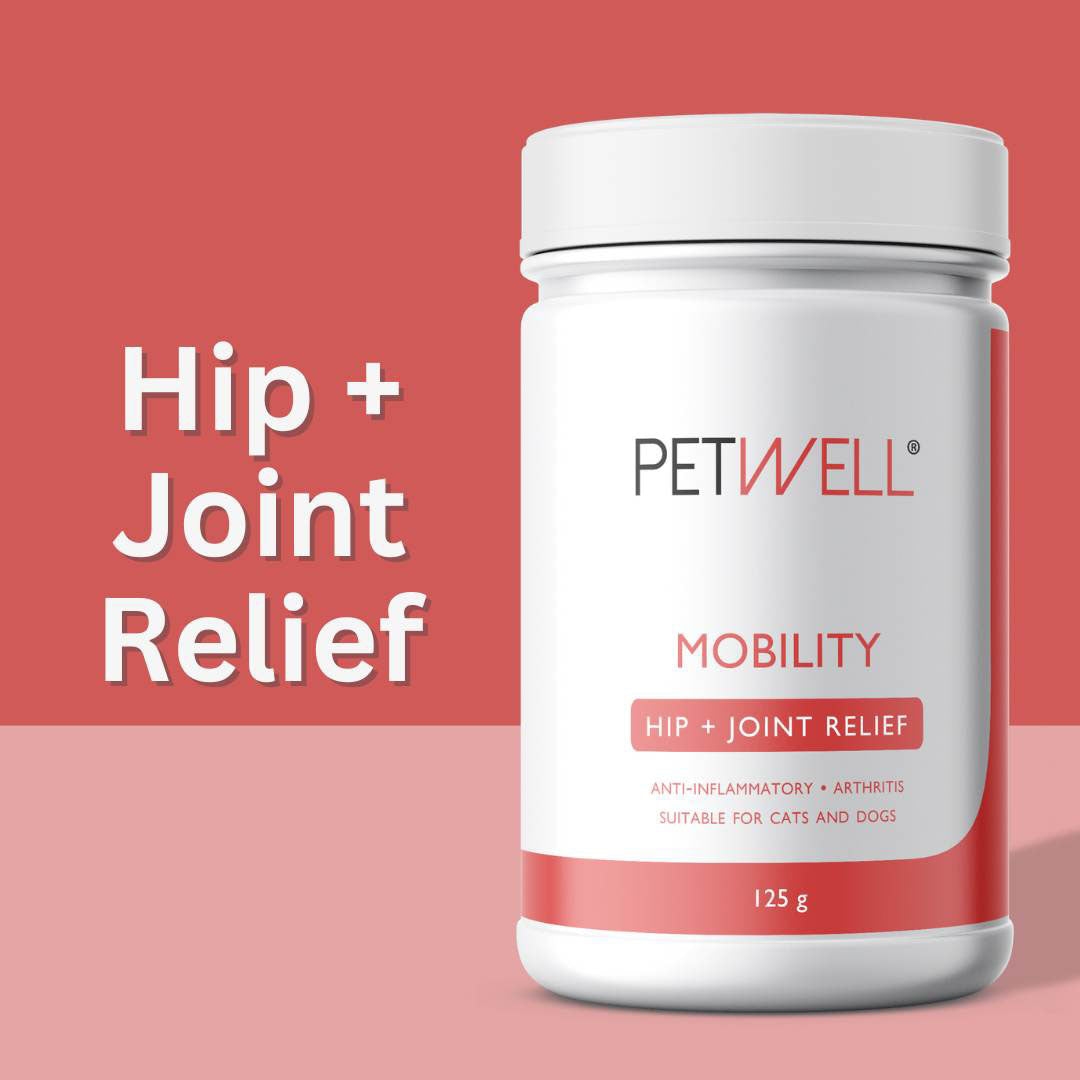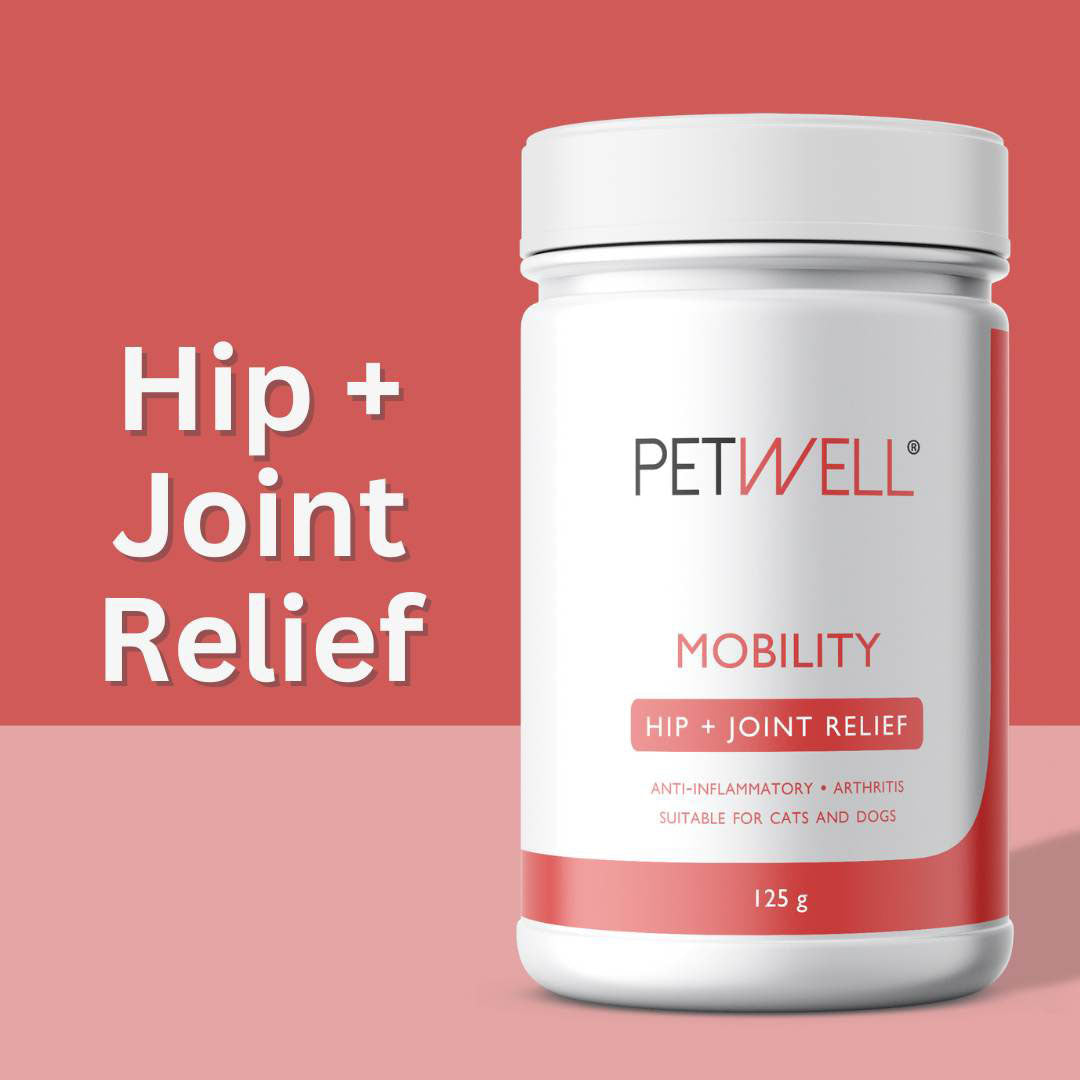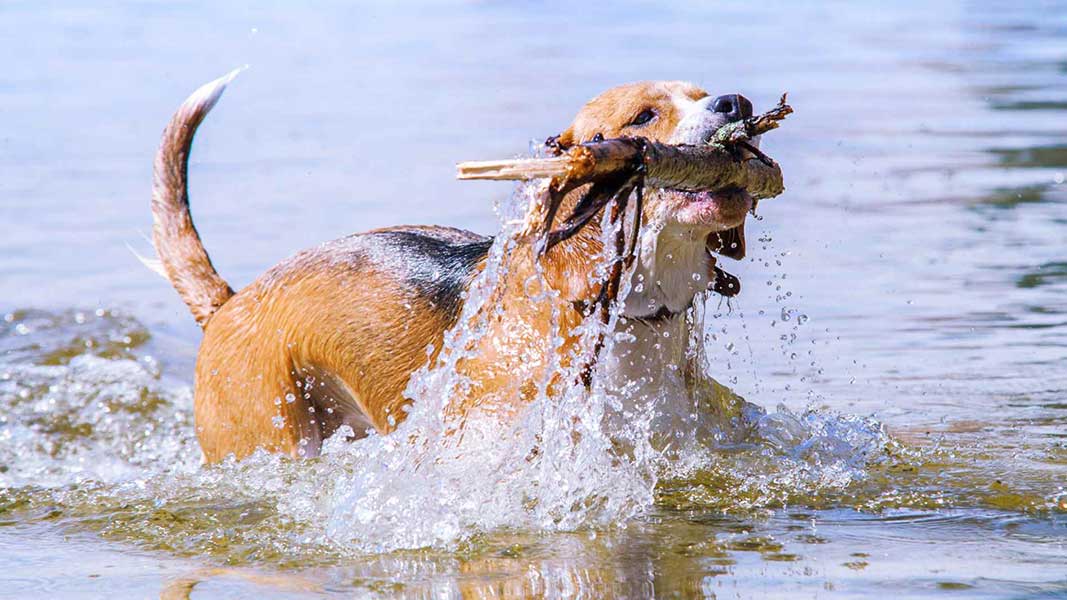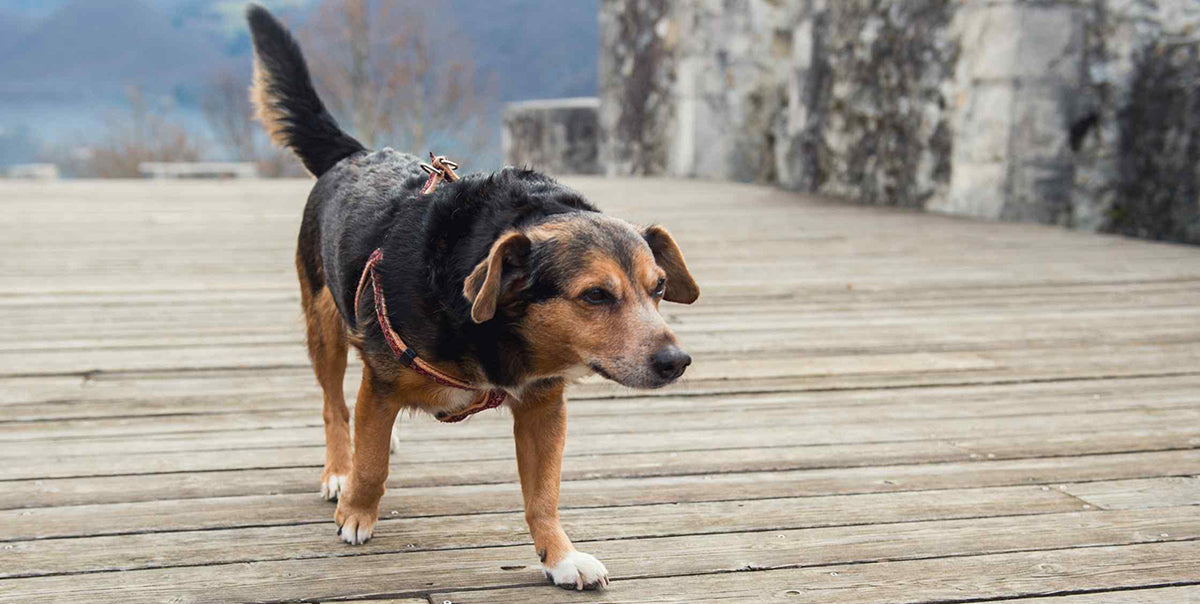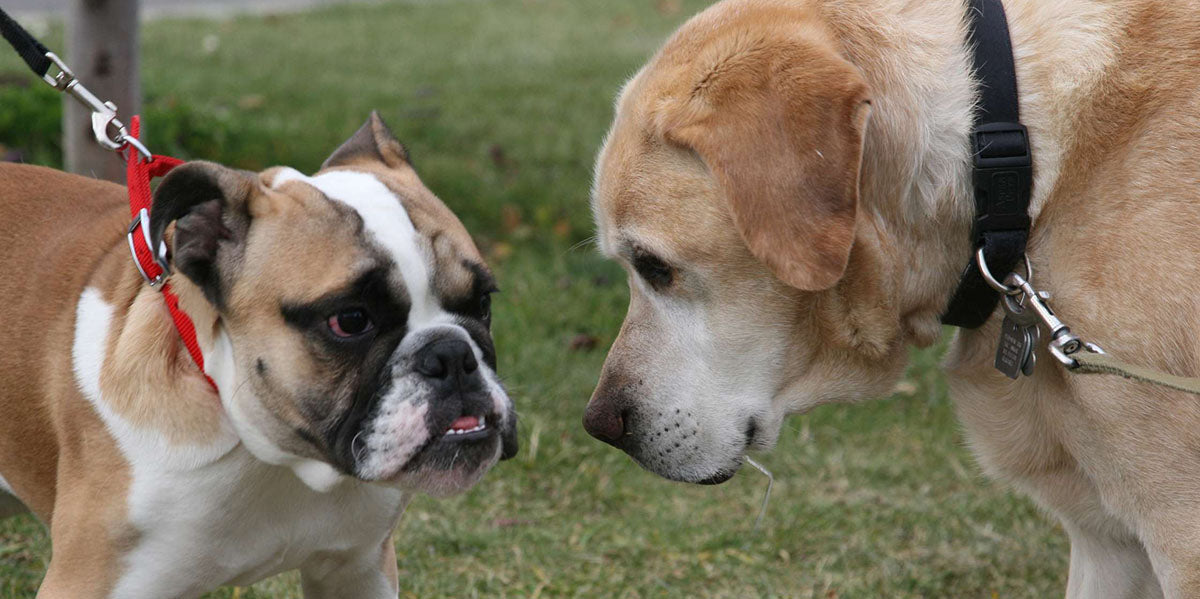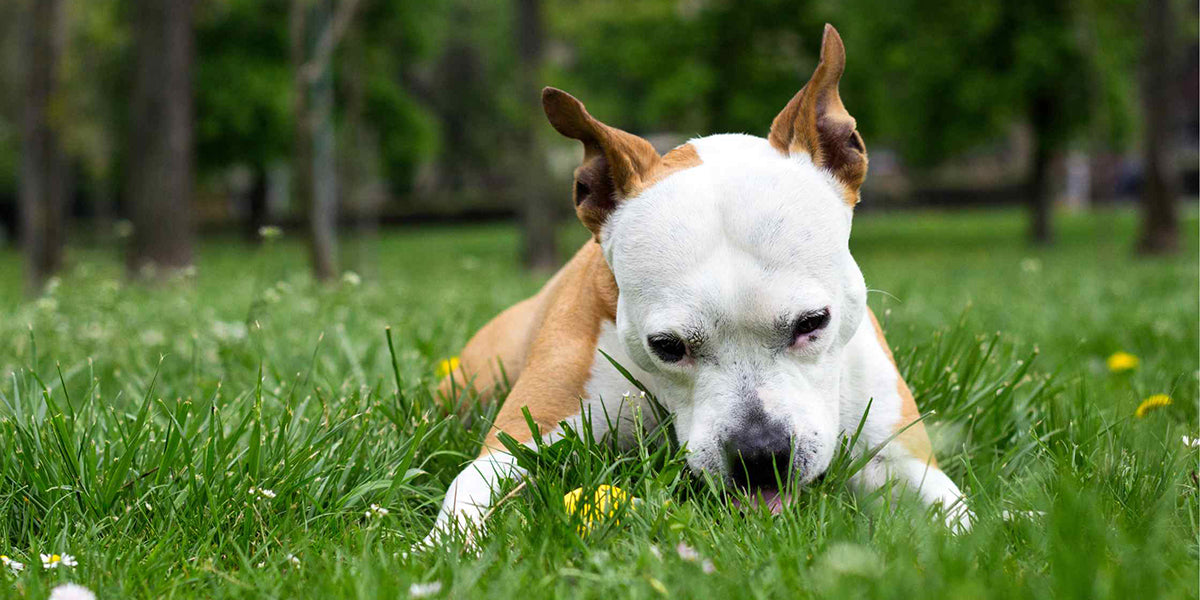Keeping your dog active is one of the simplest and most impactful ways to enhance their overall well-being. Exercise doesn’t just maintain a healthy weight—it supports joint health, improves digestion, reduces anxiety, and provides mental enrichment.
In this guide, we’ll explore how exercise benefits your dog physically and mentally, offer practical activity ideas, and share solutions to address specific health concerns using PetWell’s all-natural products.
Why Dogs Need Regular Exercise
1. Physical Health Benefits
- Supports Joint Flexibility and Mobility: Movement keeps joints lubricated and prevents stiffness. This is especially important for older dogs or breeds prone to joint issues. For additional joint support, PetWell’s MOBILITY Hip + Joint Relief supplement and MOBILITY + BEEF treats contain natural anti-inflammatory ingredients designed to keep your dog moving comfortably.
- Improves Digestion: Physical activity encourages healthy digestion by stimulating the gastrointestinal system. If your dog struggles with gut issues, PetWell’s DIGEST supplement and DIGEST + KANGAROO treats can help promote optimal gut health alongside their exercise routine.
- Prevents Obesity and Related Health Problems: Exercise plays a crucial role in burning calories and maintaining a healthy weight. Obesity can lead to complications such as heart disease, diabetes, and reduced mobility.
- Strong Muscles and Bones: Exercise is essential for building and maintaining strong muscles and bones in dogs. It improves their physical strength and reduces the risk of injuries.
- Cardiovascular Health: Dogs benefit from cardiovascular exercise. Engaging is activities that elevate their heart rate, it promotes a stronger heart and better circulation. Read more on 7 Ways to Keep Your Pet’s Heart Healthy
MOBILITY is an all-natural supplement and functional treat that has been thoughtfully designed by a pet naturopath to support your dog's joints, ensuring their mobility and overall well-being.
Packed with joint-supporting ingredients like MSM, green-lipped mussels, turmeric, and more. The ingredients work in harmony to provide optimal benefits, ensuring that your dog enjoys a life full of comfort and vitality. Give your dog MOBILITY today.
2. Mental Health Benefits
- Eases Anxiety: Dogs experience a release of endorphins during exercise, which helps reduce stress and anxiety levels. For dogs prone to nervousness, especially during stressful events, supplementing their routine with PetWell’s CALM supplement and CALM + LAMB treats can amplify the calming effects of physical activity.
- Stimulates Their Mind: Boredom is one of the leading causes of destructive behaviours in dogs, such as chewing and digging. Regular exercise keeps your dog mentally engaged and satisfied, reducing these unwanted habits.
- Mental Stimulation: Dogs are intelligent and require mental stimulation. Activities, from puzzle toys to obedience training, stimulates your dog's mind preventing boredom and destructive behaviour.
- Better Sleep: A well-exercised dog is more likely to enjoy restful, deep sleep.
- Enhanced Socialisation: Exercise more than a physical activity; it offers opportunities for dogs to socialise with other pets and people, improving their social skills.
Types of Exercises for Dogs
1. Physical Activities
- Daily Walks: Walking is the foundation of a healthy exercise routine. Aim for 20–30 minutes per day or adjust based on your dog’s breed and age.
- Fetch: Throwing a ball or frisbee is not only fun but also helps improve coordination and stamina.
- Swimming: A low-impact exercise perfect for dogs with joint pain or arthritis.
- Hiking: Hiking is a great way to provide your dog with a change of scenery and a more vigorous workout. I will also give. Them an opportunity to enjoy the fresh air and new scents.
- Agility Training: An agility course in your backyard or at a local dog park, not only provides great exercise but also stimulates your dog's problem-solving skills and coordination.
Tip: Tailor the exercises to your dog's age, breed, and physical condition. Always provide water and rest as needed during any exercise. Consistency is key, so make these activities a part of your regular routine to keep your dog healthy and happy.
2. Mental Activities
- Puzzle Toys and Brain Games: Interactive toys and puzzles are a great way to engage them mentally, hide small rewards, such as freeze-dried treats from PetWell, to encourage problem-solving and focus.
- Basic Obedience Training: Teach new commands or tricks to strengthen the bond between you and your dog while keeping their mind sharp.
- Scent Tracking: Hide a toy or treat and let your dog use their nose to find it—a fun way to activate their natural instincts.
- Introduce New Games: Dogs love a challenge and learning new things is stimulating for them. Incorporate games that encourage problem-solving and creativity.
- Hide and Seek: Playing hide and seek with your dog is a fun way to challenge their cognitive skills while getting them moving. You can also hide treats around the house or backyard for them to find.

Building an Exercise Routine for Your Dog
- Consider Your Dog’s Unique Needs: Puppies, high-energy breeds, and senior dogs have different exercise requirements. Adjust the intensity and type of activities to suit their age, breed, and health.
- Watch for Signs of Fatigue: Overexercising can be harmful, especially for senior or unfit dogs. Look for signs like excessive panting or lagging behind during walks.
- Consistency is Key: Create a routine that incorporates both physical and mental exercises for a balanced approach.
-
Warm-Up and Cool-Down for Dogs: Before exercising
- Improved Blood Circulation
- Reduced Risk of Injury
- Enhanced Muscle Performance
- Joint Lubrication
-
Cool-Down for Dogs: After exercising
- Reduces muscle soreness
- Promotes mental relaxation
Incorporating both physical and mental exercise into your dog's daily routine can lead to a happier, healthier, and well-balanced dog
Solutions for Common Exercise-Related Challenges
1. For Dogs with Anxiety
Exercise helps anxious dogs release nervous energy, making them feel calmer and more content. Activities like running, agility training, or even simple fetch can work wonders.
To enhance these calming effects, try offering PetWell CALM + LAMB treats after playtime for added relaxation.
2. For Dogs with Digestive Issues
Light walks after meals can aid digestion and reduce issues like bloating. Adding PetWell’s DIGEST + KANGAROO treats as a meal topper can further improve gut health, making digestion smoother and more comfortable.
3. For Overweight Dogs
Introduce low-impact activities, such as swimming or short, slow-paced walks, to help them lose weight safely. Use PetWell’s single-ingredient freeze-dried treats as healthy rewards during their journey to better health.
4. Dog Exercise and Joint Health
It’s important to keep exercise to low-impact activities. Gentle walks and swimming will keep them moving without the stress on their joints.
Always prioritise their comfort and consider supplements like MOBILITY Hip + Joint Relief supplement to support joint health.
5. Best Exercises for Puppies
Puppy’s joints are still developing and it’s important to ensure they are not over exerting themselves. Keep playtimes and walks short. Obedience training exercises are a great way to keep them engaged and tire them out.
6. Special Considerations for Senior Dogs
Senior dogs benefit immensely from gentle, regular exercise to maintain mobility and prevent stiffness. Focus on shorter walks, slow-paced play, and stretching exercises.
Read more about Safely Exercising Senior Dogs with Care
Exercise Requirements by Breed
- Small breeds (e.g. Chihuahua, Dachshund): 30 minutes to 1 hour of exercise per day.
- Medium breeds (e.g. Beagle, Bulldog): 1 to 2 hours of exercise per day.
- Large breeds (e.g. Labrador, Golden Retriever): 2 to 3 hours of exercise per day.
- Active breeds (e.g. Border Collie, Husky): 2 to 3 hours plus, of exercise per day.
NOTE: These are general guidelines, and individual dogs may have unique needs.
In Summary
Exercise is a cornerstone of your dog’s overall health, but it’s about more than just burning off energy—it’s about building a happier, healthier life for your dog. Whether you’re playing fetch, walking, or training, consistency and variety are the keys to success.
For added support, PetWell’s range of all-natural supplements and treats can help address specific health concerns, so your dog feels their best every day.
Start small, have fun, and enjoy the journey to a healthier, happier pup!
Disclaimer: The entire contents of PetWell emails and website are not to be taken as medical advice. The team at Pet Squad Pty Ltd trading as PetWell encourages you to make your own pet healthcare decisions based on your research and in partnership with a qualified pet healthcare professional.






